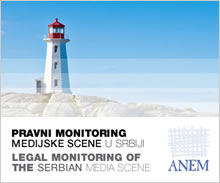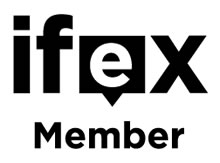24. 08. 2008
LAGGING BEHIND IN ACCEPTANCE OF NEW TV AGE
Our TV stations have to completely change their broadcasting habits until 2015
Our stations in danger of being overpowered by TV signals from neighboring countries
Belgrade, August 24, 2008 (Vecernje Novosti) – New broadcasting challenges are already emerging, not long after introduction of new broadcasting regulations and the issue of licenses for national, regional and local televisions. All broadcasting in Serbia will have to switch to digital before 2015. Digitalization of TV broadcasting is a big challenge, and we are lagging behind the rest of the world, which has already begun efforts to implement it.
Dragan Janjic, Assistant Minister of Culture, explains that it is of great importance to successfully realize this task before 2015, which is the deadline Europe has given us, because otherwise TV signals from neighboring countries would overpower our broadcasting.
- Digital broadcasting is much more powerful and of higher quality than analogue signals. Therefore it might happen that our viewers will be forced to watch Romanian or Bulgarian programs instead of RTS for which they pay license fee. Croatia is a good example. Digitalization has already been launched there, beginning with Istria. Their neighbor, Italia, has digitalized its entire network and Italian signals became more powerful than HRT's. Croatia immediately provided adapters to all households and solved the problem.
We are already late
In our country, the issue of digitalization is within the authority of the Ministry of Culture and Telecommunications, the Republic Broadcasting Agency and the Republic Agency for Telecommunications. The strategy of TV digitalization is being prepared and, after several delays, a Council should be established shortly to deal with this issue.
- We are already late, very much late, says Janjic. - Europe will completely abandon the analog system of broadcasting by 2012, while other countries in the region will achieve this goal by the end of 2014. We must catch up with them, or we will remain isolated in the media sphere. Digitalization will be a huge leap forward for the entire broadcasting system. Instead of only six, we will have 36 national frequencies. Everybody will have a chance to prove themselves.
The state, as well as TV stations, are required to begin preparations for new market demands. Archives should be converted from analog to digital formats, equipment replaced, people must be retrained... Although they have already begun this enormous task, sources from RTS estimate that they are still lagging behind. More money is needed, as well as more manpower and more time, to achieve the goal.
- We were in bad shape after the bombardment. A lot of equipment had been destroyed. But, all the equipment that was purchased later was digital, explains Lela Stevanovic, assistant technical director of RTS. - Now the entire process except the transmission has been digitalized. Digitalization of archives is underway, and it will be the most time-consuming part of the project.
Funds
In her words, the most difficult step would be to upgrade the transmission equipment to provide new system of audio and visual broadcasting. Construction of Avala tower is one of the most important tasks. The public service is already producing several hours of digital programming a day, for viewers who can receive it. But it is just experimental airing, says Lela Stevanovic.
Apart from the state and media outlets themselves, professional associations are also active in the area of digitalization. The Group for Media Sector Reform has adopted a joint platform on this issue. They demand that their members, as well as users, participate in solving the problem of digitalization.
There is a lot of work to be done to modernize the television system, and a lot of money and time will be necessary. As was previously announced, our country will apply for money from European pre-accession funds for purchase of transmission equipment in order to conform to the 2015 deadline specified by the International Telecommunication Union. Experts agree that it is of great importance that the period of simultaneous transmission of digital and analog programs be as short as possible, since it could be characterized by chaos in the media sphere.
TV sets
Most of TV sets in Serbian households cannot receive digital broadcasts. New signal will require TV adapters, which cost 20-25 euros. Some countries have supplied adapters to all viewers, while in other countries viewers were required to buy adapters themselves. Taking into account previous announcements, Serbian viewers will have to pay with their own money to watch digital programs.
- Our transmission equipment is completely destroyed, says Dragan Janjic. - We need huge amounts of money to restore it. At the moment, it is a part of the RTS and our first step will be to form a separate transmission company which will cooperate with all broadcasters, not just one.
-
No comments on this topic.





